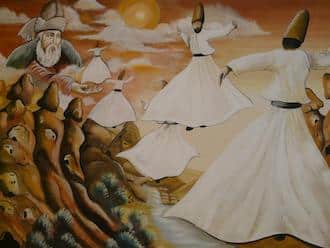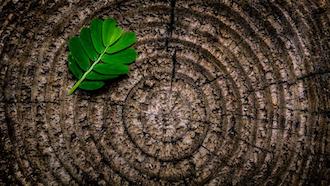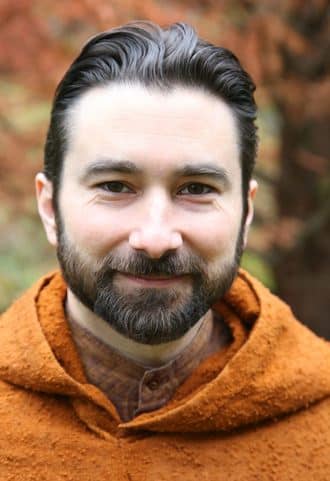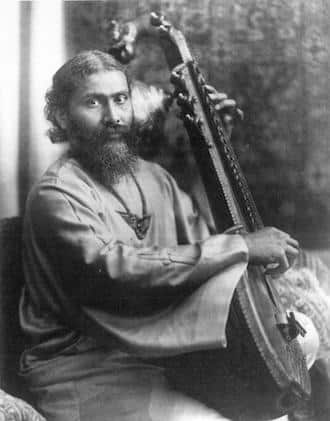Ecological Legacy of Sufism
By Tanja Mancinelli
Spiritual ecology arises out of the need for a spiritual response to our present ecological crisis.
Llewellyn Vaughan-Lee
These are the introductory words of Llewellyn Vaughan-Lee, a world renowned Sufi teacher, in his recently published book “Spiritual Ecology. 10 Practices to Reawaken the Sacred in Everyday Life”. He is one of the many examples of a spiritual mentor within the modern Sufi communities, who actively addresses the ecological problem, suggesting actionable ways to deal with and eventually solve the current environmental crisis.
This awareness of the importance of nature goes way back into the past of Sufi tradition.
The 9th century Sufi mystic Ali Al-Khawas, who was even quoted by Pope Francis in his environmental-encyclical Laudato Si, wrote that,
The initiate will capture what is being said when the wind blows, the trees sway, water flows, flies buzz, doors creek, bird sings, or in the sound of stirring flutes, the sighs of the sick, the groans of the afflicted.
Ali Al-Khawas
The universe unfolds in God, who permeates it in all its manifestation, including every aspect of nature. “Hence,” said Pope Francis, “there is a mystical meaning to be found in the leaf, in a mountain trail, in a dewdrop, in a poor person’s face.”
A key figure for the development of some Sufi lineages was the Muslim philosopher Shihab al-Din Yahya Suhrawardi.
Born in Iran in 1154, Suhrawardi founded his own school of philosophy and was probably executed in 1191 because of his unorthodox teachings. “Suhrawardi´s unification of Neoplatonism and Mazdeism finds expression in the conception of an animate universe” where everything is conceived as being the manifestation of the light of God.
The concept of an animate universe in his illuminationist philosophy plays an important role in the new age world as well as in modern spiritual ecology movements. Through the integration of the neoplatonic concept of the “chain of beings”, in which all creation is a successive effluence from the original Supreme being, or in Suhrawardi´s words the Supreme Light of lights (Nur al-Anwar), Suhrawardi builds a bridge between the transcendental God and Nature by showing that all manifestations on earth have an underpinning, an archetype in the world of pure light. Suhrawardi´s universe is inherently alive and sacred.
Contemporary to Suhrawardi, another important Sufi Teacher appeared in 12th century India: Mu´in al-Din Muhammad Chishti. Born in 1142 in Sistan, Chishti founded one of the most influential tariqas (Sufi school) of India, the Chishtiyya. Although his theology differed widely from Hindu teachings, he shared the common view amongst yogis, that of the “vital livingness of the elements and the status of the human form as a microcosm encapsulating … the whole universe.” The Chishti-Sufis understoode teachings of the Qur’an about elements as alive and worthy of deep respect. At the same time, the human body was considered as the microcosm reflecting and encapsulating the macrocosms.
Hazrat Inayat Kahn, founder of the Inayati Order
A modern Sufi teacher and actual spiritual leader of the Inayati Order is Pir Zia Inayat Khan. He regards the current ecological crisis as “a unique and compelling factor in contemporary mysticism.” Modern spiritual schools cannot avoid dealing with environmental problems as they are a reflection of a “spiritual crisis”. According to Pir Zia Inayat Khan, the spiritual answer to the ecological crisis lies in the acknowledgment of the sacredness of nature and of the environment. Spiritual practices are essential in this. Rites and prayers can potentially lead the practitioner to a state of communion with nature and help to attune them with the environment in a contemplative way.
Together with other religious leaders, Pir Zia Inayat Khan and Peter Lamborn coined the term “Green Hermeticism”. Green Hermeticism aims to reintegrate alchemical and Hermetic knowledge into modern ecology. According to Wilson, it can be understood as a “specifically green form of spirituality, that provides a much -needed sacred theory of Earth, the body, and Nature.” Its intention is to be a holistic approach to the environmental crisis, where “science transcends and erases all separations such as inner and outer, spirit and matter, divine and human, earthly and heavenly.”
But the ecological legacy of the Inayati Order is older than the Green Hermeticism and goes back to its founder, Hazrat Inayat Khan. According to his teachings, “there is one Holy Book, the sacred manuscript of nature, the only scripture which can enlighten the reader.”
Nature takes a central position, in Khan´s worldview, as the source of true knowledge: “to the eye of the seer every leaf of the tree is a page of the holy book that contains Divine Revelation.” According to Khan, we can gain direct knowledge of life by ‘reading’ nature. Nature for him is the ‘place’ where we can find ‘truth’. This is why Hazrat Inayat Khan – and Sufism today – regards the conservation and protection of the natural environment as a spiritual priority.
Tanja Mancinelli, Interfaith Minister from the Inayati Order, has a background in Biology and Religious Studies. Presently she is doing an internship at the Interfaith Center for Sustainable Development (ICSD).
For other faith’s statements on the environment, please click here.
ICSD works on a global basis, with current engagement in Africa, the Middle East, North America, and Europe.




